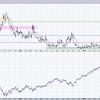The Decline of the Lunch Rush: How Changing Work Habits Are Impacting Restaurants
The traditional lunch rush, once a staple of American restaurant culture, is now experiencing a decline as shifting work habits and preferences reshape the way people dine. Traditionally, the lunch rush was a time when restaurants would be flooded with office workers looking for a quick and convenient meal before returning to work. However, as more people embrace remote work or flexible schedules, the traditional lunch rush is becoming a thing of the past.
One of the key factors contributing to the decline of the lunch rush is the rise of remote work. With more companies offering remote work options and employees seeking a better work-life balance, fewer people are commuting to the office on a daily basis. This means that there are fewer office workers out and about during traditional lunch hours, leading to a decrease in foot traffic for restaurants.
Additionally, changing work habits and schedules are also playing a role in the decline of the lunch rush. Many people are now opting for smaller, more frequent meals throughout the day rather than a single large meal at lunchtime. This means that they are less likely to participate in the traditional lunch rush and are instead eating at different times or opting for on-the-go options.
Furthermore, the rise of food delivery services and meal delivery kits has also impacted the lunch rush. With more people choosing to have meals delivered to their homes or offices, they are less inclined to dine out during lunchtime. This shift in consumer behavior has forced many restaurants to adapt their business models and offer delivery services to remain competitive in the changing food landscape.
As a result of these changing trends, restaurants are now faced with the challenge of attracting diners during non-traditional meal times. In response, many establishments are expanding their menus to offer brunch options or all-day dining to cater to customers looking for a meal outside of the traditional lunch rush hours.
Overall, the decline of the lunch rush signifies a larger shift in how people approach dining out and reflects changing consumer preferences and work habits. While the traditional lunch rush may be fading, restaurants have an opportunity to adapt to these changes by offering more flexible dining options and appealing to customers looking for convenience and variety in their dining experiences.

























